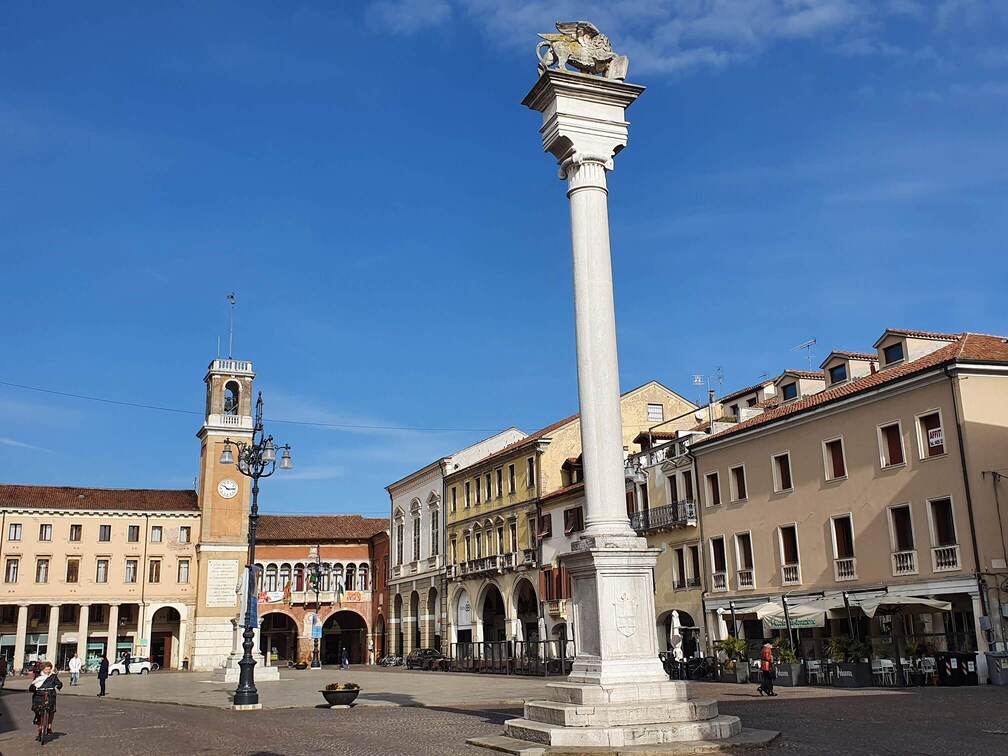Rovigo tourist and travel information
Rovigo, in the northern Italian region of the Veneto, is not on the usual tourist trail. Between Venice and Ferrara, it is the capital of its own province, but with illustrious neighbours like these, it’s not surprising that the less exciting Rovigo gets overlooked. It’s undeniable that other larger and more ancient cities in this part of Italy have more attractions for the visitor along with beautiful historic centres. If you’re planning a city stay or a day trip, there are destinations with more appeal. However, unassuming Rovigo has an extremely good museum, several noteworthy artworks, and a couple of handsome piazzas. It also hosts high-profile art exhibitions.
If you are looking for somewhere relatively undiscovered to spend a few hours, are looking for a stopover on the route down this side of Italy or are tempted by the latest exhibition, Rovigo is definitely worth considering. It will particularly suit Italy-lovers who enjoy exploring off the beaten track and who appreciate authentic, everyday Italy. Read on for a tourist guide, recommendations and places to stay – including a rather tempting agriturismo.
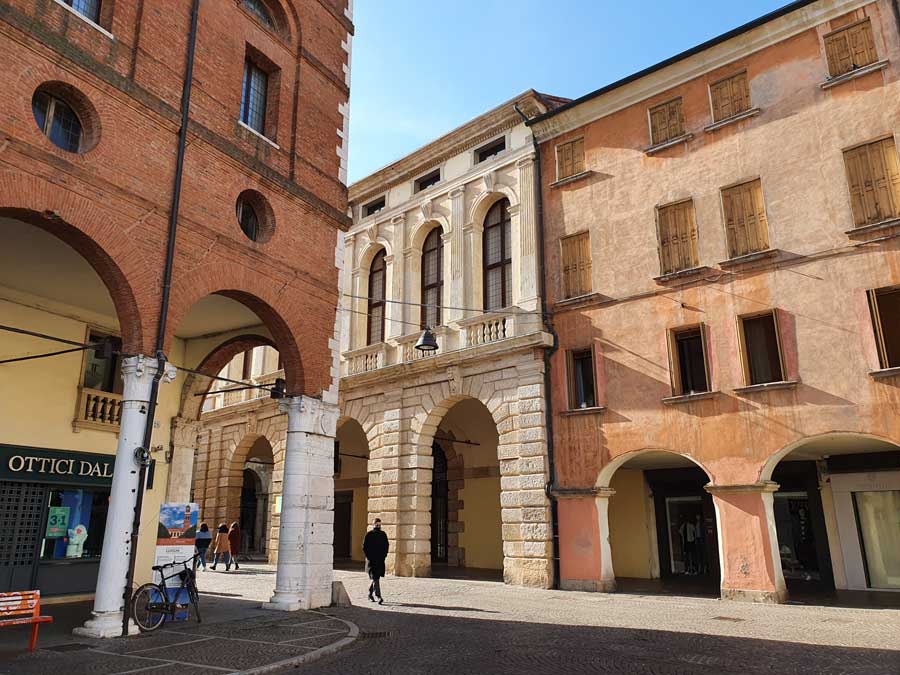
I visited Rovigo on an easy day trip from Venice by train, spent around six hours sightseeing and eating, and could have spent a bit longer. I saw the town’s most interesting sights but didn’t have time to fit in an enticing temporary exhibition. It was just right for a day trip – enough to do, but not too much. The non-touristy feel is refreshing if you’ve travelled from somewhere like Venice, and so are the prices of food, drink and attractions. If you’re spending longer in the area, you should also consider a trip out to Adria for its archaeological museum.
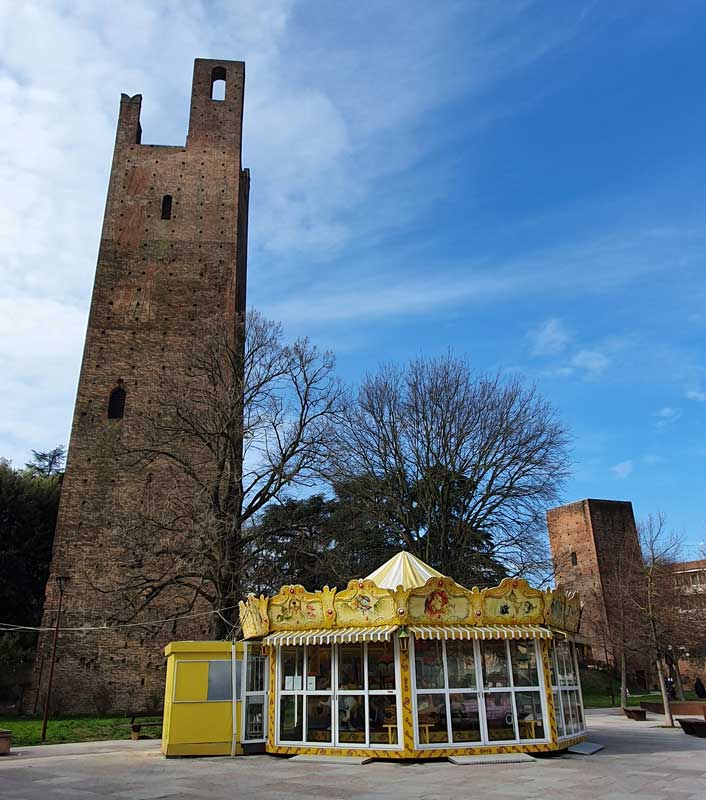
Rovigo in context
Rovigo’s location is in an area known as the Polesine, between the rivers Po and Adige as they head towards the sea. During history this area has been swampy and seen water courses change routes, meaning that villages, towns and their importance has shifted. Visitors can learn more about this intriguing landscape and its past in a marvellous local museum, the Museo dei Grandi Fiumi (Museum of the Great Rivers). The Po Delta is an interesting area to visit if you’re spending time locally.
Rovigo hasn’t had the same long-lasting significance or grandeur as the better-known Veneto cities, although for a while it was important enough for a number of nobles to build palaces here. The attractive historic part of town is limited to a few streets. Walking around, it’s hard not to think that after the 1950s, the city’s architects and town planners simply lost interest in appearances. The majority of buildings date to a building boom in the second half of the 20th century, unattractive and sometimes shabby. However, the scattering of historic palaces and elegant arcades from earlier times brings charm to the centre, along with a Lion of St Mark recording the years when a then-mighty Venice ruled Rovigo as part of its extensive mainland territories.
Close to the border between the Veneto and the neighbouring region of Emilia-Romagna, Rovigo takes influences from both regions in its culture and its cuisine.
Rovigo – why visit?
- Two handsome piazzas
- A fantastic history/archaeology museum
- Small but fine art gallery
- Art exhibitions
- Good food
- Convenient size for a day visit
- Strategic location on railway and driving routes
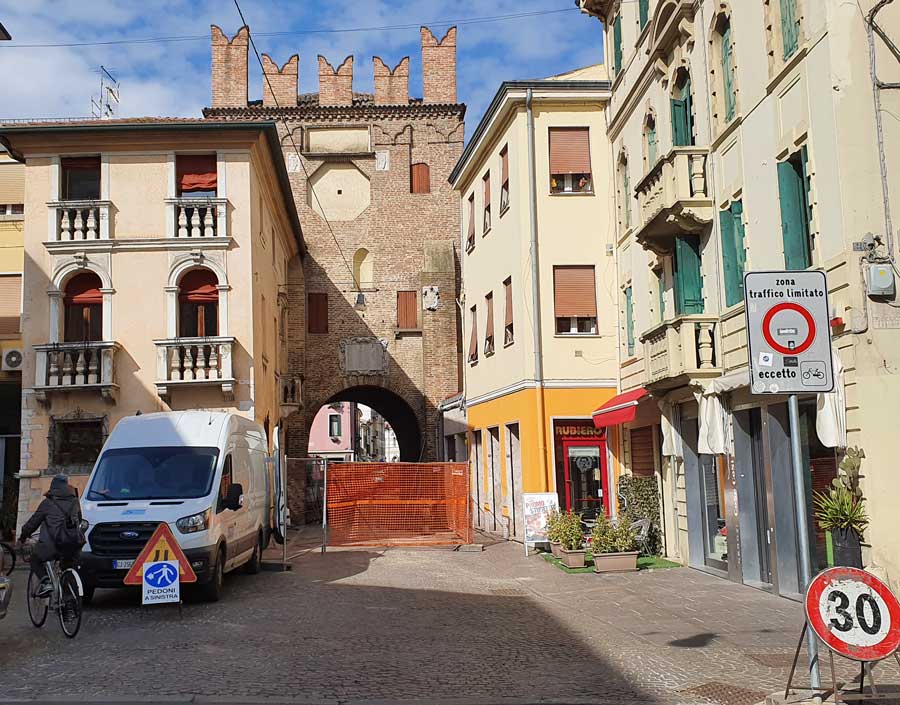
Visit Rovigo – what to see and do
The main sights of Rovigo can be explored on foot, though you can expect 10-15 minute walks through uninspiring streets at times. From the railway station it’s around 12 minutes’ walk to the heart of town, Piazza Vittorio Emanuele II. Previously Piazza Maggiore, and later renamed after the first king of united Italy, this is a large and handsome square. Its monuments include a Lion of St Mark on a column, a reminder of the town’s days under Venetian rule.
This piazza is the place to begin your discovery of Rovigo. The Tourist Information Office (IAT) is under a portico by the town hall, Palazzo Nodari, close to the clocktower and facing a handsome historic staircase. Staff were very friendly and helpful when I visited; they can supply maps and help with plans. Check the tourist office’s own opening hours, as they vary through the year and may be limited to morning only.
The town’s second fine square is Piazza Garibaldi, just a few yards away, where buildings curve away down the street beyond, and pride of place belongs to an equestrian statue of Risorgimento hero Giuseppe Garibaldi.
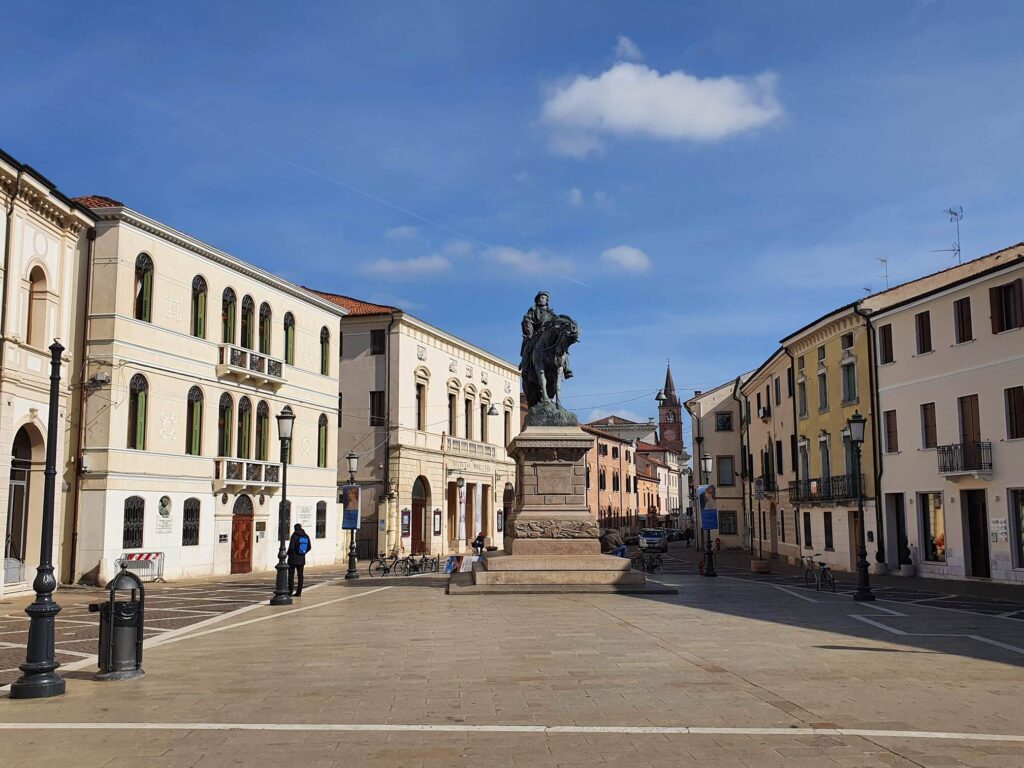
Timings: my tip for visiting Rovigo, and indeed any Italian day-trip destination, is to spend a short time online researching sights and their current opening times in advance. It’s also worth checking the official tourist website to see if purchasing a local tourist card, the Rovigo Card, could save you money on admission tickets. If you haven’t already noted useful opening times for local attractions, confirm these at the tourist information office, or look them up online while enjoying a hot drink in one of the cafés under the arches along the square. With some sights potentially opening only in the morning or only in the afternoon, you may need to work out a timetable to see the best of Rovigo.
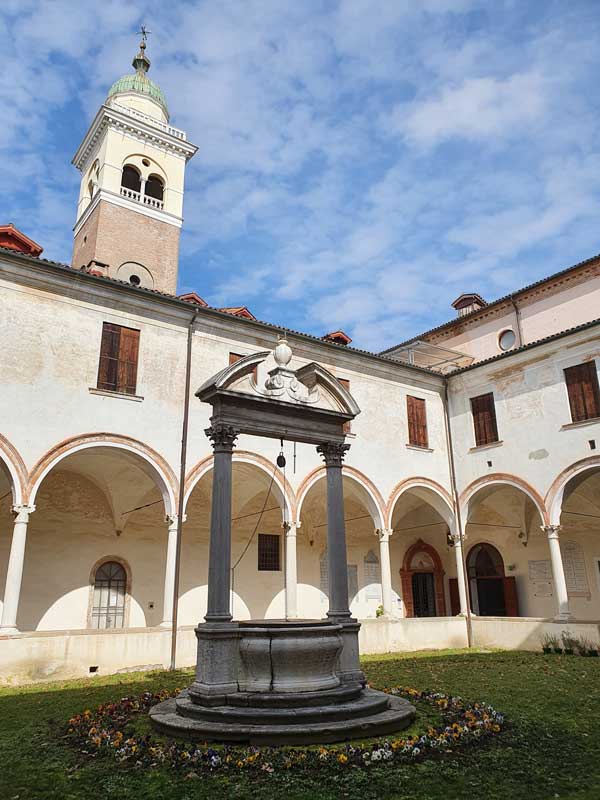
Museo dei Grandi Fiumi (Museum of the Great Rivers)
If you’re interested in history, the Museo dei Grandi Fiumi is a must. Housed in a former monastic complex a 12-minute walk from Piazza Vittorio Emanuele, this historical and archaeological museum covers the history of the delta area up to the Renaissance, but also weaves in developments in a wider area of Italy and beyond. With entertaining reconstructions as well as archaeological finds, excellent explanatory notes and information in both Italian and English, the museum is thoroughly engaging for both children and adults – without the dumbing-down that can be an issue in modern museums

The museum displays begin with a multi-media room introducing the mythological associations of the area, which relate directly to the exhibits which follow. The story of amber trade routes and the local amber-working using amber from the Baltic is fascinating. Tracing a chronological route through the museum, the visitor can learn about early glass-working in the region (including an illustrative tableau), admire ancient works of art, gaze at the reconstructed scene of a funeral pyre, walk through homes of different prehistoric and historic eras, learn about Roman land drainage and division and much more. There’s a lot to take in here, and if you want to see the museum thoroughly and read all the information provided, I’d recommend allowing something over an hour.
https://www.comune.rovigo.it/myportal/C_H620/museograndifiumi (There’s an admission fee. Opening times are restricted, so do check and plan ahead.)
Palazzo Roverella
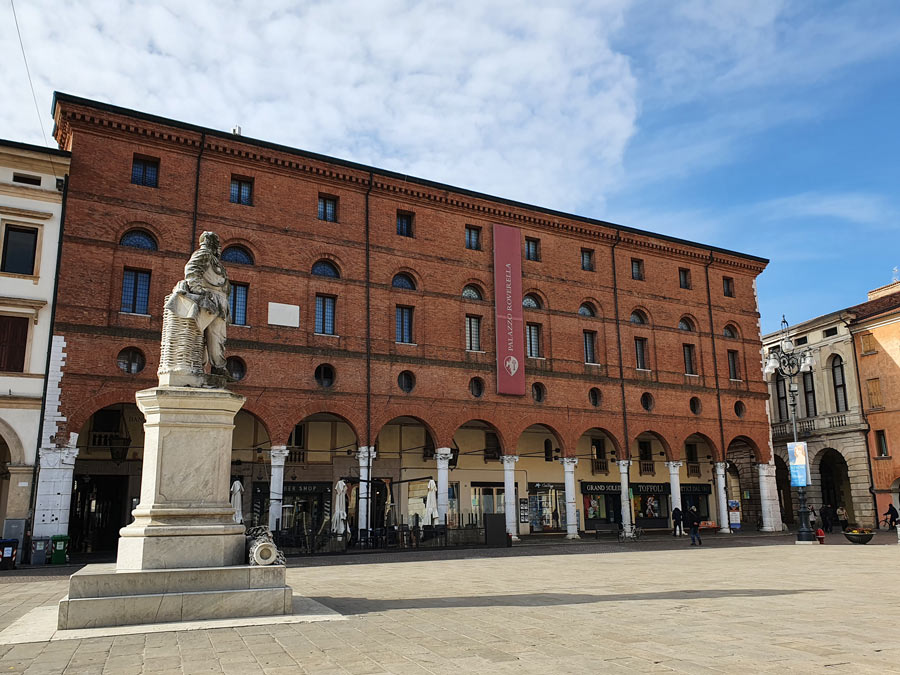
This large Renaissance palazzo on Piazza Vittorio is probably Rovigo’s main attraction for tourists. Built for a fifteenth-century cardinal who died before the building was completed, it has been restored and is now the artistic heart of the town. As well as a permanent art collection, the palazzo also hosts high-profile temporary exhibitions, often the kind that visitors will travel to see: ‘destination’ exhibitions. There is a charge for exhibitions but at the time of writing the permanent art gallery, the Pinacoteca, is free to visit and I’d highly recommend paying a visit. The entrance is just off the piazza on Via Giuseppe Laurenti.
The artworks in the Pinacoteca come from the collection of the Accademia dei Concordi, a local cultural institution. A memorable highlight is the Panorama of Venice by Giovanni Biasin. Dating from 1887, this is a remarkable 22-metre long view of Venice, hung to encircle the viewer and provide an immersive experience. It’s a captivating record of Venice in the late nineteenth century, with steamers that were the forerunners of today’s vaporetti, Venetians working on the lagoon shores, and elegant couples promenading through the gardens where the Biennale is now held.

The other art on display is older and begins with archaeological finds, including small Etruscan and Roman votive bronze statuettes. There are some fine portraits by artists including Giambattista Piazzetta and Giambattista Tiepolo. Religious works include an exquisitely decorative fifteenth-century altarpiece of Santa Lucia (St Lucy) by Quirizio da Murano, and two paintings by Giovanni Bellini: a Madonna and Child, and Christ Carrying the Cross. I particularly liked a Renaissance Madonna and Child by Pasqualino Veneto, who must have been influenced by Cima da Conegliano – especially in his wonderfully detailed background of hills, fortified towns, swans, rabbits and mountains.
The art collection is spread through a few smallish rooms and is refreshingly manageable in size, allowing for a leisurely and enjoyable visit.
https://www.palazzoroverella.com/
Food and drink
After its principal tourist attractions, Rovigo’s appeal includes a choice of places to eat. If you’re on a day trip or staying overnight, I’d strongly recommend including an excellent lunch or dinner as an integral part of your plans. And why not start your day with a hot drink and pastry under a loggia? Pick from one of the tempting cafés and bars under the arcades around Piazza Vittorio.
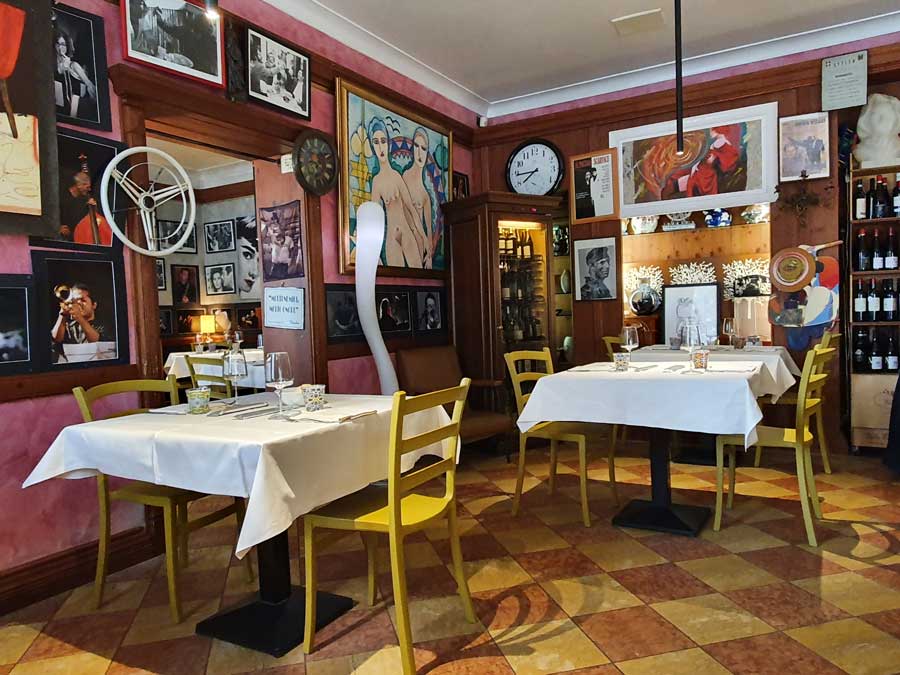
For sit-down meals, you’ll find a choice of restaurants and cafés around the two piazzas, some of which have outdoor tables. Travellers with cars could try some of the highly-rated options in the outskirts. I’d suggest checking the latest reviews online, and also be sure to check opening hours and days (restaurants in Italy frequently close one day a week). For food on the go, Non Solo Pizza in Piazza Garibaldi is a popular choice for take-aways.
I took a short walk from the heart of town to Prosciuttiamo, a stroll that included a view of the Tempio La Rotonda (see below) on the way. With a cosy, eclectic interior, rich food, sparkling house wine and moderate prices I found the restaurant welcoming, and a great choice for an indulgent lunch and a break from sightseeing.

More tourist sights
Tempio La Rotonda
For some visitors, especially Catholics, Rovigo’s most notable attraction will be its renowned octagonal church, the Chiesa della Beata Vergine del Soccorso, known as the Tempio la Rotonda. Built at the end of the sixteenth century to house a miraculous image of the Madonna and Child, this is an unusual, monumental church with an interior covered with paintings of religious scenes mixed in with allegories – some of them surprisingly voluptuous – and celebrations of local dignitaries. The interior is quite striking and overpowering, and the exterior is imposing. However, given that the church’s limited opening hours may restrict your plans (check ahead), that it’s a short walk from the centre of town and that there is an entrance fee, I’d rate this as less of an essential sight unless it sounds like something you would be particularly interested in. https://www.tempiolarotonda.it/
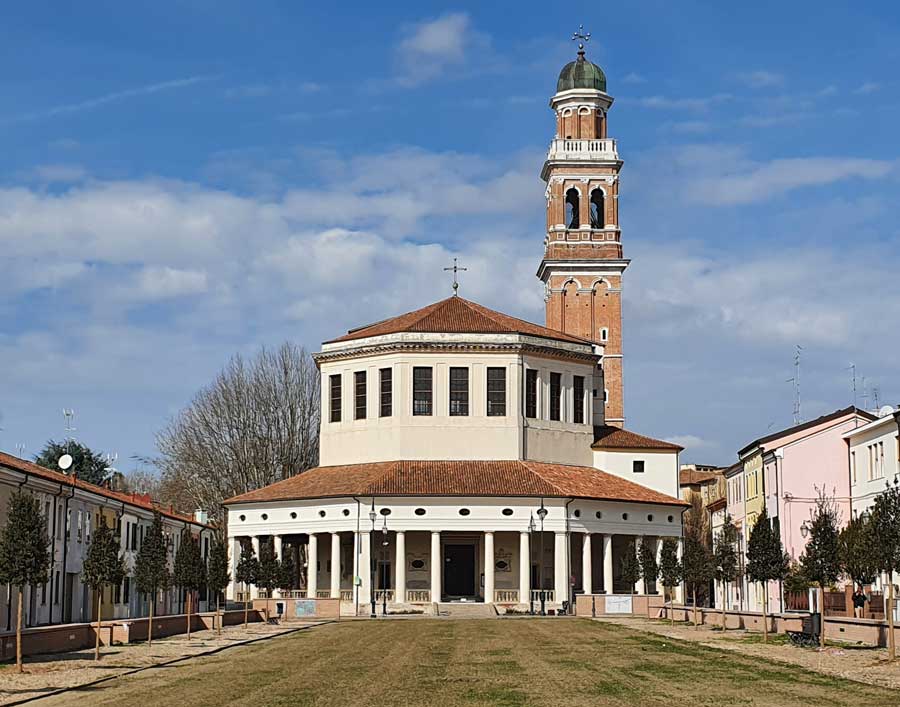
Towers, palaces and markets
An exploration of Rovigo shouldn’t miss its ‘Two Towers’ (due torri). They may not be as dramatic as those of Bologna but these remnants of the town’s medieval castle, joined by surviving stretches of wall in a little park, are a symbol of the town. There are pre-bookable tours of the towers, in Italian, Fri-Sun, otherwise you can only view the exteriors (https://www.visitrovigo.it/it/scopri-la-citt%C3%A0/i-musei/torri-del-castello-medievale). I visited during the weekly Tuesday market, which stretched through Piazza Matteotti alongside, and down Corso del Popolo, with stalls selling clothes, shoes and more.
A third, quirkier tower can be seen on a residential street, Via Renato Pighin, nearby nearby. The Torre Pighin is another surviving section of the medieval town defences. Centuries after its construction, the side facing inwards towards the town had a residential building constructed inside it, resulting in a strikingly unusual appearance.
Palazzo Roncale is another of Rovigo’s grand palaces. Opposite Palazzo Roverella, this is now another exhibition venue, hosting temporary exhibitions, usually with a local interest or theme. The building is open to the public only during exhibitions. https://www.palazzoroncale.com/
As you walk south from the town centre towards the Museo dei Grandi Fiumi, either Via Cavour or Via X Luglio will lead you through one of the town’s historic gateways, the handsome fifteenth-century Porta San Bortolo, constructed as part of the city walls when Rovigo was under Venetian rule.
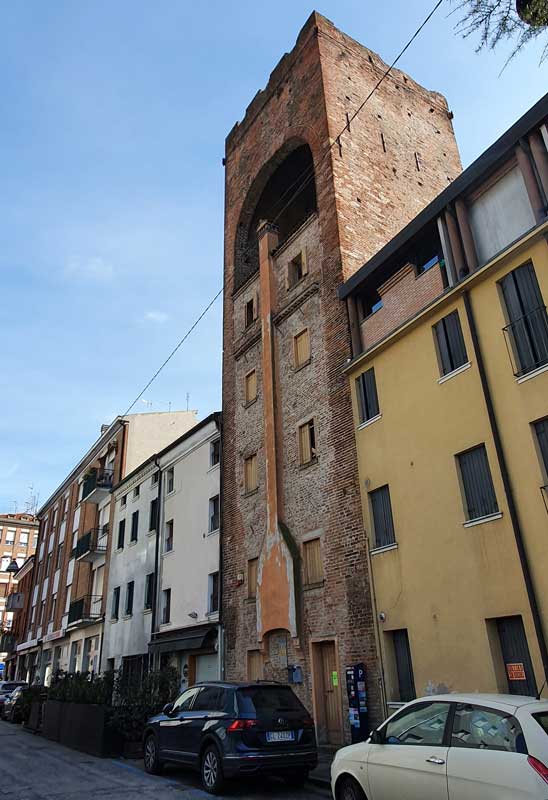
Churches and art
There are other churches of minor interest in Rovigo, though opening times are limited. San Bartolomeo is worth popping into when you visit the Museo dei Grandi Fiumi alongside; here I particularly admired two paintings of saintly pairs by Girolamo da Carpi (1501-1556), Sant’Agata e Santa Lucia and San Benedetto e San Bartolomeo, as well as a later martyrdom scene by local artist Francesco Ferrari, Il Martirio di San Aurelio (1686).
Between Piazza Garibaldi and the Porta Bortolo on Via X Luglio you’ll pass the unobtrusive exterior of the church of Sant’ Antonio Abate (known as the church of San Domenico). The church is open in the morning and late afternoon for prayer and mass; its artistic offering includes a Baroque statue of St Barbara and a rather appealing sixteenth-century painting by a Venetian artist of the Madonna and Child surrounded by the local notables who contributed to the altar or church.
The town’s cathedral, the Duomo is dedicated to Santo Stefano and lies close to the castle ruins, a simple building with a façade that was never completed – it’s worth visiting the interior for its art if you find it open (I didn’t).
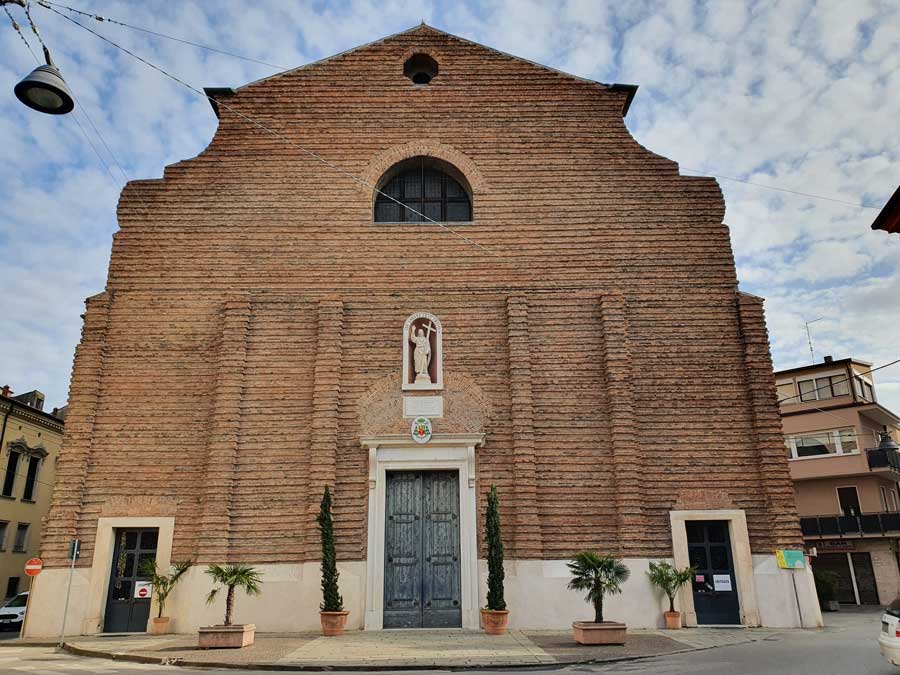
Rugby
Rovigo is proud of being a rugby town, with the sport played here since the 1930s. The local club, Rugby Rovigo Delta, are among the top teams in Italy and play at the Stadio Mario Battaglini, which is in walking distance of the town centre and railway station. Check the club’s website or social media for links to buy match tickets. http://rugbyrovigodelta.it/
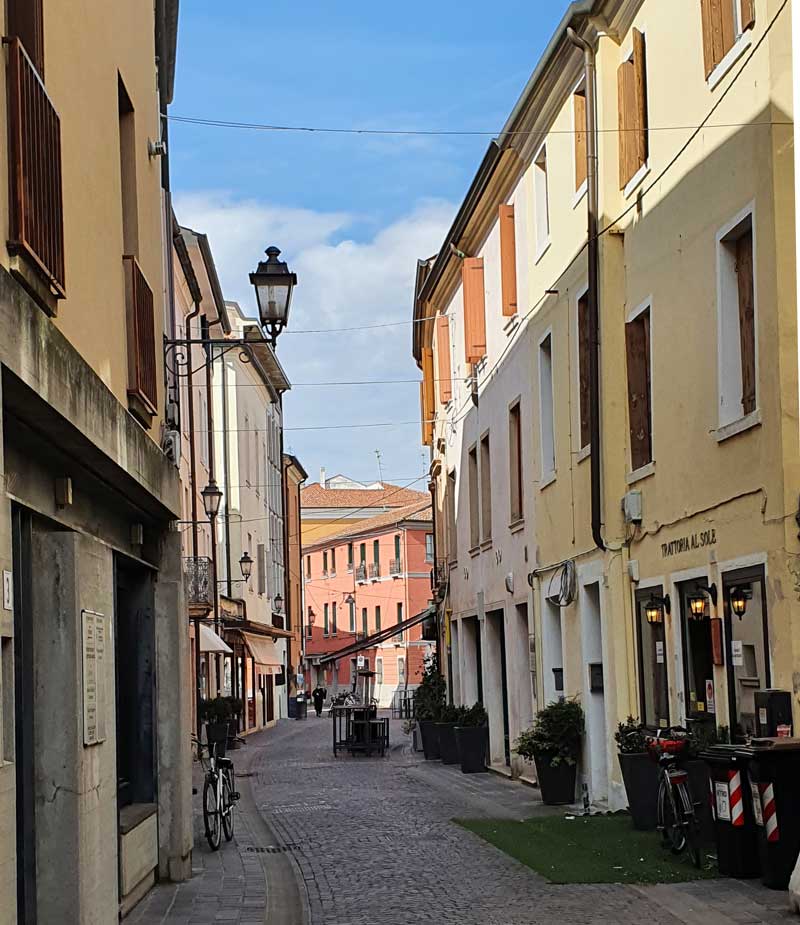
Travel to Rovigo
Rovigo has a railway station on the main line between Padua and Bologna, making it an easy destination for public transport users. With direct trains to Rome, Trieste, Treviso, Verona, Venice, Florence, Naples and even Lecce in Puglia, the town is extremely well-connected by train (trains in Italy). The station is a short walk from the centre of town. The surrounding area is served by buses operated by FS Busitalia Veneto, with routes including Rovigo-Adria.
Rovigo as a day trip?
I found Rovigo a very enjoyable day trip destination, partly because I had no prior expectations for it to live up to. It’s always rewarding to explore a new destination in Italy, perhaps more so if isn’t famous or celebrated. Unlike a big art city such as Padua, there was no pressure to fit in a long list of sights. Every good thing I discovered felt like a happy bonus.
I always say that every single town in Italy has something to offer, and often the more time you spend there the more you find of interest. I was pleasantly surprised in Rovigo, and I think most people would enjoy a few hours here to admire the piazzas, tour the Museo dei Grandi Fiumi, look at art, and feast on good regional food. Don’t expect too much, and you’ll find Rovigo has definite charms.
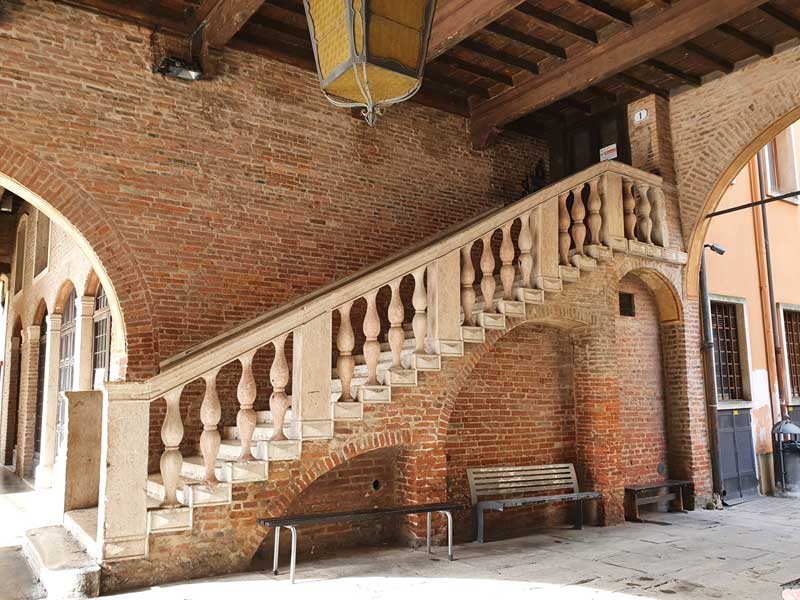
Rovigo on an itinerary
Rovigo is conveniently placed on an art and history route down the Adriatic coast from Venice and Padua towards Ferrara, Bologna and Ravenna. Whether you are driving or travelling by train, you might wish to consider a stop here. I think it could make a good overnight base for drivers, with a meal and the Museo dei Grandi Fiumi thrown in. Especially if you are travelling with children, the museum is worth a visit even if you don’t have time for the town centre. For a refreshing change of pace in a busy sightseeing schedule, check out the agriturismo accommodation I suggest in my list of places to stay below.
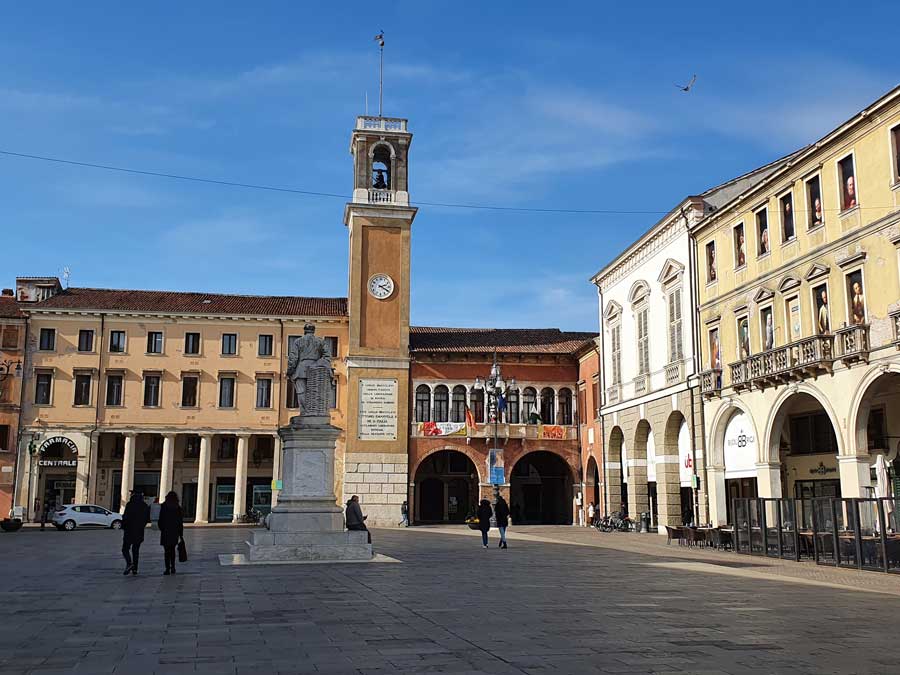
Places to stay in Rovigo
This website is supported through affiliate links so if you can book your accommodation through these links (or bookmark them for later), thank you!
Rovigo isn’t a town over-burdened with tourist hotels, but there are several places to stay, along with holiday apartments, which may be a good choice locally. In the surrounding countryside the possibilities become more interesting, with some appealing agriturismi offering rural or farm stays.
- Best Western Hotel Cristallo – a bright and practical option for travellers, close to the train station, with parking.
- B&B Pereuka – small, welcoming B&B with shared bathroom.
- Agriturismo Corte Benetti – something refreshingly different! A great family-run farm stay option just outside Rovigo with a restaurant and animals including llamas and alpacas. At the time of writing they offer llama trekking experiences.
- Villa Regina Margherita – accommodation in an elegant nineteenth-century villa between the railway station and the heart of town.
- Accommodation availability search for Rovigo including hotels, apartments, B&Bs and agriturismi
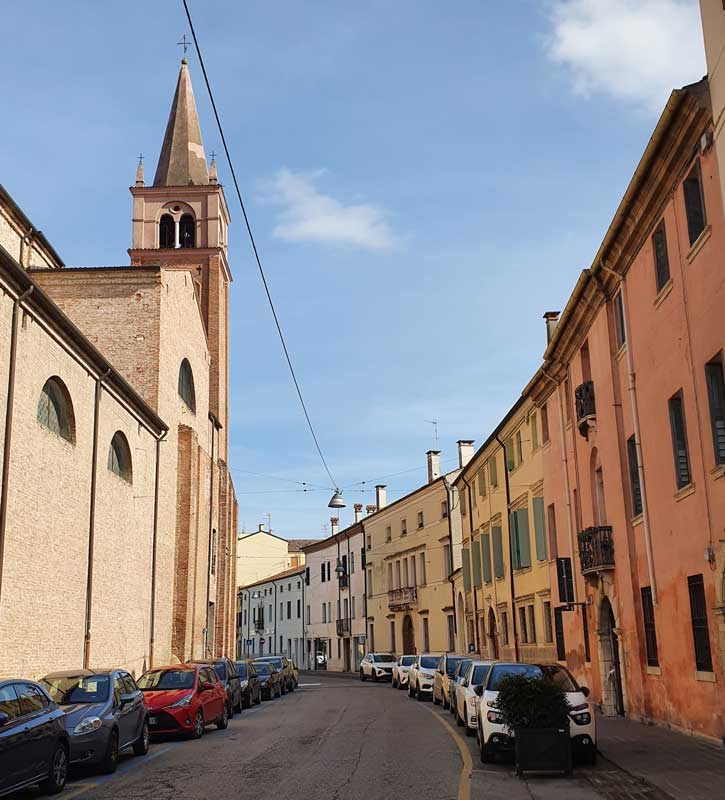
Around Rovigo
Heading east from Rovigo takes you towards the sea and the atmospheric land-and-water-scape of the Po Delta. Halfway between Rovigo and the coast is the small town of Adria, which has a more ancient history than Rovigo. Once an Etruscan port, Atria, as it was called, began losing its importance to Ravenna in the Roman era. Nowadays it has an interesting archaeological museum, the Museo Archeologico di Adria. The Adriatic sea was named after this once-important town.
Holidaymakers spending longer in the area in the summer months may wish to head for the nearest seaside and its low-key destinations such as Rosolina Mare (Rosolina Mare accommodation), where there are beach clubs, free beach, camping and hotels. Close by, between the delta lagoon and the sea, is the resort island of Albarella (Albarella accommodation). Cycling is a popular activity in Rovigo and these flat, low-lying wetlands of the Polesine offer a number of cycle paths (piste ciclabili) to explore the rivers Po and Adige and land inbetween.
A short drive or train ride from Rovigo is the village of Fratta Polesine, home to several fine historic villas (note the station is a short walk along rural roads from the village). Villa Badoer is one of the Veneto’s UNESCO-listed Palladian villas, designed by Andrea Palladio in the 1550s and now the site of an archaeological museum, the Museo Archeologico Nazionale di Fratta Polesine.
For easy day trips and onward travel, the railway line takes you from Rovigo to other attractive destinations such as little Monselice with its hilltop fortress, Padua, Ferrara and Bologna. Venice is just over an hour away by train. Picturesque fishing port Chioggia, at the southern end of the Venetian lagoon, is about an hour’s drive or 70 minutes by train from Rovigo; the port’s seaside suburb, Sottomarina, is another potential beach destination in the area.
Read more
- Visit Rovigo – official tourism website
- Po Delta – some historical background
- The Po: An Elegy for Italy’s Longest River by Tobias Jones (Amazon UK affiliate link)
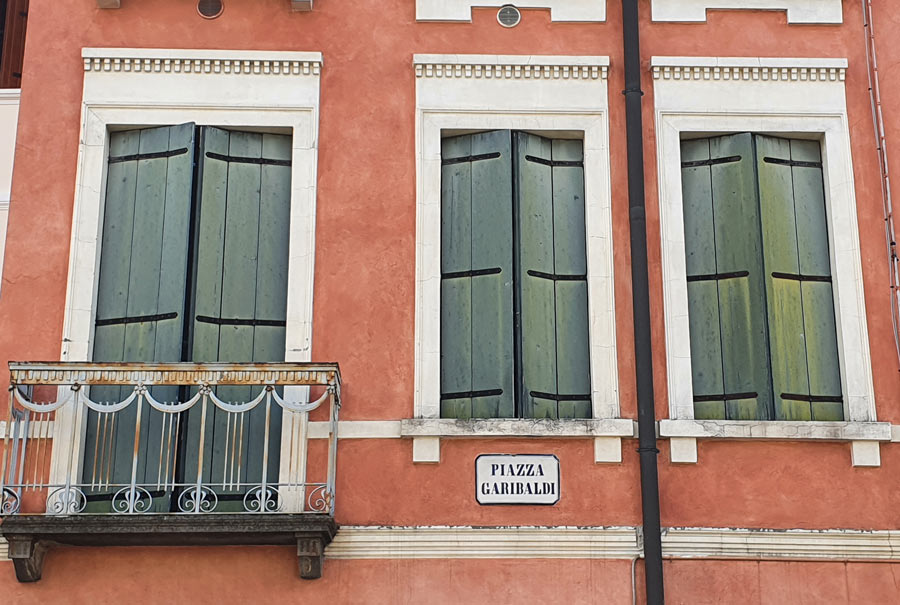
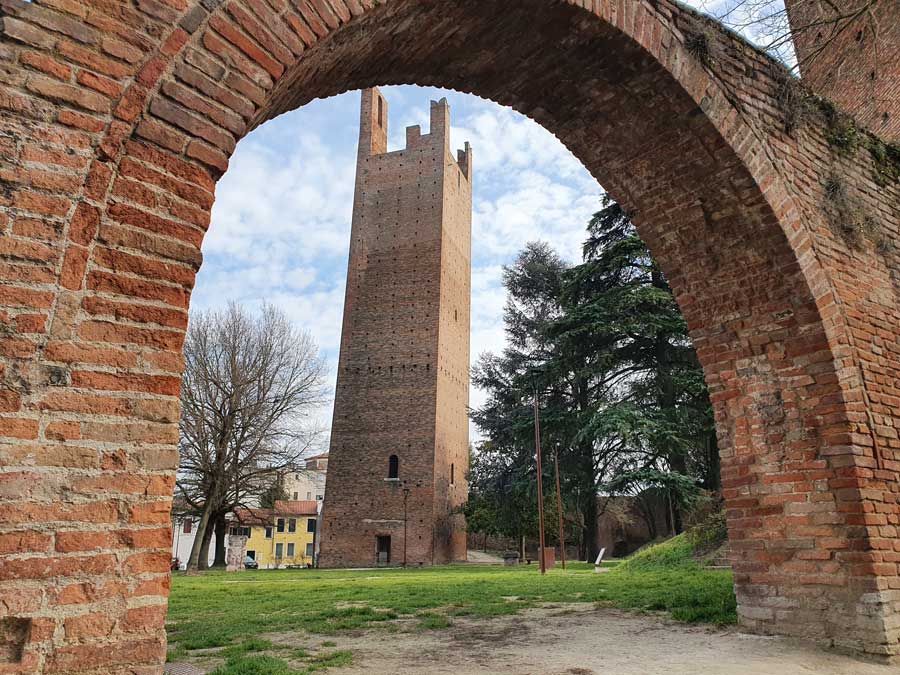
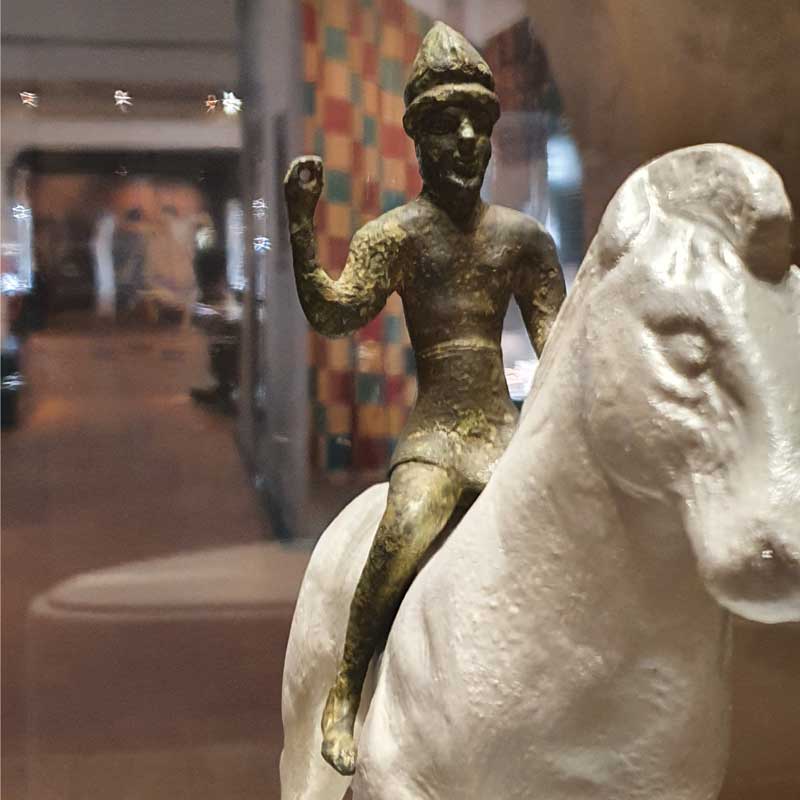
Veneto destinations
- Veneto region
- Abano Terme
- Asolo
- Bassano del Grappa
- Brenta Canal
- Caorle
- Castelfranco Veneto
- Chioggia
- Cittadella
- Concordia Sagittaria
- Conegliano
- Cortina d’Ampezzo
- Lido di Jesolo
- Malcesine
- Marostica
- Monselice
- Montegrotto Terme
- Padua
- Portogruaro
- Rovigo
- Sottomarina
- Treviso
- Venetian Lagoon
- Venice
- Verona
- Vicenza
- Veneto art & architecture itinerary
- Veneto villas – Vicenza: La Rotonda & Villa Valmarana ai Nani
- Veneto villas – Villa Pisani & Villa Foscarini Rossi, Strà
- Venice Airport
- Treviso Airport
